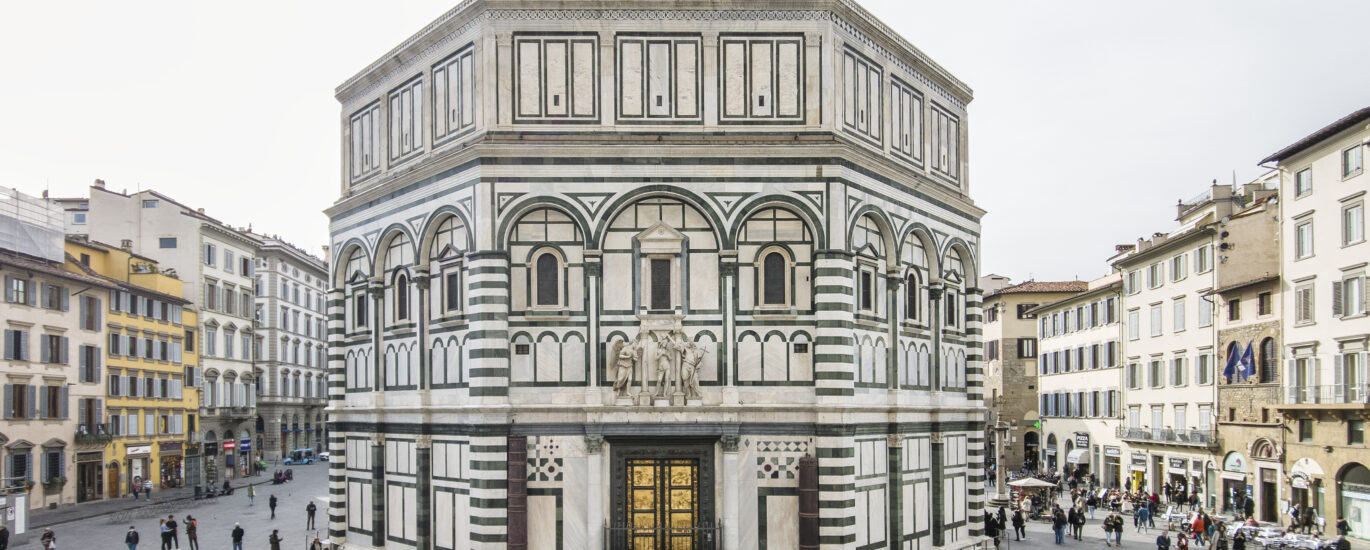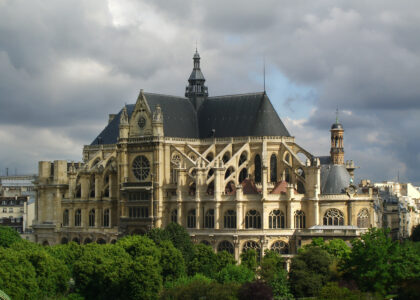Welcome to the Battistero di San Giovanni, an architectural marvel nestled in the heart of Florence’s Piazza San Giovanni. As you stand before this iconic octagonal structure, let your imagination travel back to medieval Florence, a city burgeoning with art, culture, and religious fervor. The Baptistery, as it’s commonly known, is one of the oldest buildings in Florence, with its construction beginning in 1059 and concluding in 1128. It stands as a testament to the Romanesque architectural style that was prevalent at the time.
Imagine the scene: the bustling streets of Florence in the 11th century, filled with artisans, traders, and pilgrims who all revered this sacred place as the center of religious life in the city. The Baptistery was dedicated to Saint John the Baptist, the patron saint of Florence, symbolizing purification and new beginnings. Its significance was such that every Florentine, including the illustrious poet Dante Alighieri, was baptized here.
As you observe the striking marble facade, you’ll notice the intricate patterns of white and green marble, a design that inspired many subsequent structures in the city, including the magnificent Florence Cathedral. But the true masterpieces lie within—the three sets of bronze doors, each telling a story of their own. The most famous of these are the ‘Gates of Paradise,’ a name coined by Michelangelo himself. These doors, crafted by the masterful Lorenzo Ghiberti, took over 27 years to complete and depict scenes from the Old Testament with astonishing detail and depth.
Inside, the mosaic ceiling glistens with gold, portraying a heavenly vision that transports visitors to a celestial realm. The mosaics, created between the 13th and 14th centuries, illustrate the Last Judgment, a common theme intended to remind the faithful of the afterlife. Imagine the awe and reverence felt by the citizens of Florence as they gazed upwards, contemplating their place in the grand tapestry of life.
Over the centuries, the Baptistery has witnessed numerous historical events. It stood resilient through the tumultuous periods of plague, war, and political upheaval. It was here that political leaders and artists alike sought divine guidance. The Medici family, Florence’s powerful rulers, were among those baptized within these ancient walls, further intertwining the Baptistery’s history with the city’s legacy.
Today, the Battistero di San Giovanni remains a vital piece of Florence’s cultural and religious heritage. It continues to draw visitors from around the world, not only for its historical and artistic significance but also as a place of worship and reflection. As you leave this remarkable site, consider the countless generations that have crossed its threshold, each leaving with a renewed sense of wonder and a deeper connection to Florence’s storied past.




